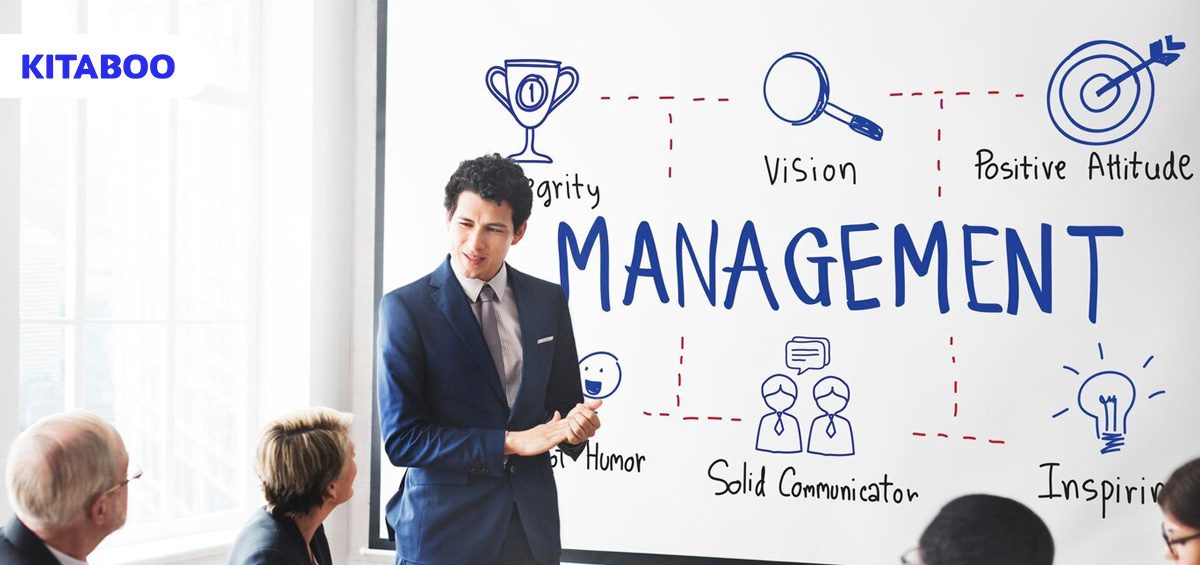In modern business, the concept of sustainability has transcended its conventional role. Today, businesses are going beyond their profit-centric approach to integrate sustainability and ethical conduct into their core operations. Propelled by corporate social responsibility, the paradigm of business success is changing to favor a more holistic perspective. The onus of maintaining an equilibrium between profitability and sustainable business practices falls on CEOs.
So, how can a K12 publishing CEO incorporate sustainability into their business strategy? This is where technology can make a significant difference. Using a cutting-edge digital textbook platform such as KITABOO for instance, can make the publishing process both profitable and sustainable.
In this blog, we’ll explore the intricacies of a sustainable business and offer actionable tips to achieve the balance between profit and purpose.
Let’s get started.
Table of Contents:
I. What is Sustainability in Business?
II. Why Should Businesses Practice Sustainability?
III. The Challenges of Sustainable Business Leadership
IV. Strategies to Achieve Balance Between Profit and Purpose
- Foster a Triple Bottom Line Approach
- Incorporate Sustainability into Corporate Strategy
- Engage with All Stakeholders
- Ensure Resource Efficiency
- Follow a Long-Term Approach
V. Conclusion
What is Sustainability in Business?
Sustainability is the ability of a business to achieve long-term growth and success while remaining mindful of adverse environmental impacts. A sustainable strategy facilitates a business to curtail its environmental footprint while providing enhanced value to its stakeholders.
The fundamental concept of sustainability stands on the three basic pillars i.e.- social, environmental, and economic sustainability.
Why Should Businesses Practice Sustainability?
There’s no denying that the world is reeling under acute environmental and social challenges. Issues like pollution, global warming, resource depletion, climate change, social inequities, etc., are escalating at an alarming rate. The need of the hour is to address these challenges effectively.
Business organizations are a stakeholder here as they propel economic growth and social change. By adhering to sustainable business practices, they can usher in desirable changes. The strategy makes sense not just environmentally but economically as well.
When an organization invests in sustainable business solutions, it is better positioned to adapt to evolving needs and regulations. This enables it to gain an edge over its competitors and remain ahead of the curve.
For instance, when a K12 publishing business adapts to eBooks, it opens up opportunities for sustainable growth. With a platform like KITABOO, publishers can scale up or scale down their operations instantly. This eliminates the need to invest in physical resources and decreases the company’s carbon footprint.
The Challenges of Sustainable Business Leadership
While there are apparent advantages of sustainable business strategies, transitioning to them has its challenges.
Many CEOs are under the impression that sustainability investments may not translate into profitable returns immediately. However, this belief is on the decline. Today, there are ample examples to highlight that sustainability and profitability can coexist right from the beginning.
For example, if a K12 publisher wishes to embed multimedia and interactivity features into an eBook, they can do so quickly, without having to invest in any additional resources, provided they are using the right digital publishing platform.
The right platform will also allow for easy distribution of eBooks across the world. Publishers don’t need to invest in republishing eBooks..
Another challenge leadership faces is the complication of measuring the impact of sustainable solutions. This can also be addressed via a platform that provides detailed analytics and reports.
Today, the challenges of leading a sustainable business can be addressed by investing in effective digital solutions, amongst other ways.
Strategies to Achieve Balance Between Profit and Purpose
Balancing profit and purpose remains at the core of sustainable business practices. They can coexist when reinforced with the right approach. These two aspects can also generate long-term value for the stakeholders, employees, clients, and vendors.
Here are some of the key strategies for achieving this balance:
Foster a Triple Bottom Line Approach
Traditionally, the bottom line in a business framework focuses exclusively on profits. When it comes to sustainability though, businesses need to adopt a triple-bottom-line approach. This takes into consideration not just their financial performance but also their social and environmental performance. In other words, businesses need to track and measure the impacts of all three aspects on their profits.
Incorporate Sustainability into Corporate Strategy
Sustainability isn’t a stand-alone factor. To maximize its impact, it has to be embedded into the core of a corporate’s business strategy. This can entail setting sustainability targets and strategies and even allocating resources to meet the objectives.
Engage with All Stakeholders
By actively engaging stakeholders, businesses can comprehend their concerns and expectations. This will enable them to adopt the right approach to sustainability and win the trust of all stakeholders.
For instance, once a K12 publisher identifies their requirements, they can partner with a platform like KITABOO. By leveraging the features of such a platform, publishers can fulfill their sustainability requirements.
Ensure Resource Efficiency
A fundamental aspect of sustainable business practices is to minimize waste and optimize the use of existing resources. One way to achieve this objective is to reduce the reliance on finite resources.
Collaborating with digital platforms can reduce wastage, while facilitating a business operational growth.
Follow a Long-Term Approach
Sustainability isn’t a short-term goal. Organizations need to adopt sustainable practices that can create long-term impacts on their business and the people associated with it. They need to adopt a systematic approach that can ensure the interdependence of the social, environmental, and economic aspects of sustainability.
Digital publishing platforms such as KITABOO can be used by businesses to follow a long-term approach to sustainability. Using the innovative features of the platform they can fulfill their business purposes without compromising on profitability.
The Way Forward
While sustainable business practices are a necessity in the modern business landscape, how a CEO decides to implement them can make all the difference. Sustainability calls for innovation, collaboration and an out-of-the-box approach to every aspect of one’s business.
As a digital textbook platform, KITABOO is dedicated to help K12 businesses and CEOs achieve their sustainability goals. To know how we enable this write to us at KITABOO@hurix.com.
Discover How An Ebook Conversion, Publishing & Distribution Platform Can Help You
Kitaboo is a cloud-based content platform to create-publish & securely distribute interactive mobile-ready ebooks.
You May Also Like








